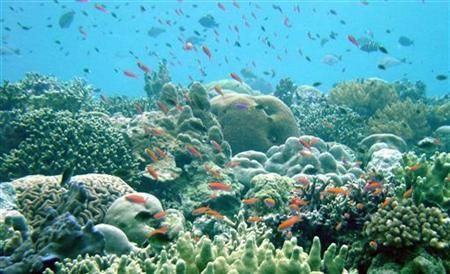The Third Massive Coral Bleaching Wave Poses Threat to The Reefs Across The Globe

The National Oceanic and Atmospheric Administration (Noaa) have predicted that the phenomenon of coral bleaching is taking place globally for the first time in the history in El Nino's absences. The federal agency recently introduced a model that predicts threats that the coral reefs are prone to.
Bleaching of corals occurs when the colorful underwater flora are exposed to changing frequency of light or temperature and in some cases because of inadequate or excessive nutrients. This changes the color of the corals and often result in their death. The experts at Noaa are worried about the rising temperature across the world that has a potential to destroy the coral reefs.
Noaa recently updated its model, Coral Reef Watch, that now forecasts four months in advance how oceans are likely to behave at an increased temperature. The model has predicted bleaching at a major level due to the trending increased temperature of the ocean ecosystem since 2014.
"The outlook shows a pattern over the next 4 months that is similar to what we saw during global coral bleaching events in 1998 and 2010," warned the Coral Reef Watch's coordinator, Mark Eakin.
The first global bleaching phenomenon was reported in 1998. The bleach wave started from the Pacific and reached the Indian Ocean. The second massive global wave was recorded in 2010 with similar affected areas.
To report a problem or to leave a feedback on the article, send an e-mail to emailtoguneet@gmail.com.





















